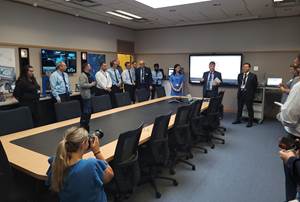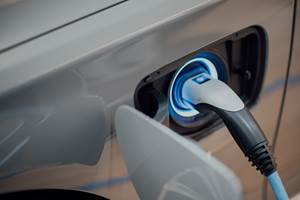Taking Cost Saving Seriously
At this tier-one automotive supplier, cutting costs and improving productivity are everyone's jobs.
Share


ECi Software Solutions, Inc.
Featured Content
View More


Hwacheon Machinery America, Inc.
Featured Content
View More

Takumi USA
Featured Content
View More

.png;maxWidth=45)
DMG MORI - Cincinnati
Featured Content
View MoreBorgWarner Inc.'s Diversified Transmission Products plant in Muncie, Indiana, is full of cats—but not your ordinary, mouse-catching tabbies. We're talking cats with a capital C . . . and A and T. The letters are an acronym for the Cost Attack Teams that prowl every corner of the plant looking for ways to cut costs and improve manufacturing efficiency. The teams are a part of the plant's master plan for staying competitive as it begins its second century of service as a tier-one supplier to the automotive industry.
Several years ago, things were looking bad for the Muncie plant. It had sold off its largely unprofitable manual transmission product lines and manufacturing equipment, resulting in a half-empty plant and employee layoffs. The divestment turned out to be a smart move, however, because it freed the company to concentrate its efforts on transfer cases, a product it had been making, primarily for Ford, since 1974.
For non-car-buff readers, transfer cases are drive systems that allow a driver to transfer power to all four wheels in driving situations where additional traction is desirable, and return to two-wheel drive for normal driving conditions. In modern systems such as BorgWarner's Torque-On-Demand (TOD) transfer case, wheel slippage, which previously could result in loss of control by the driver, now automatically triggers a transfer of power between the front and rear axles to maintain full control. Originally developed for 18-wheelers, transfer cases are becoming increasingly available on passenger cars. In fact, they have become a must-have feature for today's light trucks and SUVs, which are the fastest growing segment of the passenger car market.
The Muncie plant has been supplying transfer cases to Ford and, more recently, to Korean customer Ssangyong. It also recently received orders from General Motors that will boost sales by $200 million annually, according to BorgWarner. With orders for transfer cases booming, the Muncie plant has come roaring back. It is currently at 80 percent of capacity and climbing, and at a time when many firms are still announcing layoffs, Muncie is about to recall more than 100 of its employees.
Ron McCoy, vice president, operations, adds some perspective on the Muncie plant's increased activity: "Our company is 100 years old, and the Muncie plant has transformed itself many times over the years in response to the demands of the marketplace," he notes. "Currently, we are focused on transfer cases, and our overall strategy is to improve our operations every way we can to grow the transfer case business.
"An important part of that strategy is getting our employees involved in improving our manufacturing operations," he continues. "That's what our Cost Attack Teams (CATs) are all about."
A CAT is born when an employee on the plant floor gets an idea about how something could be done better. The idea can involve any aspect of the plant's operation, machining, quality control, assembly, maintenance, shipping, and so forth, as long as its goal is a cleaner, safer, more efficient operation. Unlike traditional employee suggestion programs where management reviews the merit of suggestions and may or may not decide to implement them, any employee at BorgWarner's Muncie plant is empowered to implement his or her idea. That includes assembling a CAT team made up of other operators, engineers, quality control people, and anyone else whose area of specialty might be needed to make the idea work.
Each week, the members of the CATs that successfully implemented improvements the preceding week participate in a drawing for a $100 gift certificate. Every month, there is an additional drawing, with the winner receiving $500 worth of BorgWarner stock. But Mr. McCoy feels that the main incentives for employee participation in the CAT program are the recognition from management and fellow employees and the personal satisfaction that comes from making a contribution to the plant-wide effort to improve operations. Then, too, everyone in the plant participates in a profit sharing program, and any idea that improves the bottom line enriches everyone. Currently, six to eight CAT teams come together to implement an idea every week.
Fat CATS
Also part of the plant's overall improvement strategy are the visual factory teams, which are made up primarily of management and engineering. Dubbed Fat CATs, the visual factory teams are more structured, permanent teams responsible for large-scale improvements such as reorganization of entire departments to improve work flow, recommendation of major capital equipment purchases, modifications to assembly lines and similar projects that require a management-level perspective.
Between the CATS and Fat CATs, virtually every aspect of the plant's operation, no matter how humble, comes under critical scrutiny. For example, employees were slipping and falling on plant floors that had just been cleaned. An Injury Review CAT, created to correct the problem, discovered that the maintenance staff was eye-balling the amount of liquid soap it added to the buckets of water used to mop the floors. (Just the way you do it at home, right?). Too little soap left the floors dirty; too much soap left residue that became slippery when wet, creating a potential for injuries from falls.
The team proposed that a dispenser be used to meter the proper amount of soap into the bucket every time. It also recommended changes in the type of soap used and the manner in which it was applied, which not only resulted in cleaner, safer floors but also a modest savings in cleaning materials by avoiding wasteful use of the liquid soap.
Another CAT project involved a battery of five-axis horizontal machining centers. As it came from the manufacturer, each HMC was topped by a large, heavy, sheet metal chain guard. It took two workers 90 minutes to remove the chain guard from the top of the machine and replace it when they were finished working on the machine. When it was discovered that the machines would run without the chain guards, maintenance permanently removed them. However, the unguarded chain created safety and housekeeping issues. A CAT team resolved the dilemma by developing a lighter cover that hinges out of the way to provide access to the tool chain.
A Simple Screw
Some improvement ideas begin as CAT projects but demonstrate so much potential that they quickly attain Fat CAT status. A case in point addressed a recurring problem the plant was having machining the cast aluminum housings for large transfer cases. The plant produces three different types of large transfer cases: established manual and electric models and the company's more recently introduced, automatic, Torque-On-Demand (TOD) model. Although the housings for the manual and electric models are identical, the one for the TOD model is slightly different.
The aluminum housings are machined on the department's 13 five-axis, high speed, horizontal machining centers. They are manually loaded, two at a time, onto a fixture mounted on the machining center's indexing table. After one side of the housings is machined, the table indexes 180 degrees to present the other side of the housings for machining. The housings are removed from the machining center completely machined and ready for inspection. Total machining time for each casting is about 6 minutes.
Every now and then, a wrong housing would get mixed in with the batch being machined. As a result, the high speed machining spindle would be damaged (replacement cost about $25,000), and the machine would be idled for however long it took to replace the spindle, putting production behind schedule. The department needed a way to keep operators from loading the wrong casting into the machine.
A third-shift machining center operator noticed that the housing for one large transfer case model had a cast-in feature that the other did not have. He came up with the simple but effective solution of inserting a setscrew in the fixture that bears against that feature, which prevents the "wrong" housing from fully seating in the fixture and alerts the operator to the problem. The plant calculates that adding the setscrews to the fixtures saves about $250,000 annually (the department was experiencing about 10 crashes per year because of wrong castings), not counting the related savings in cutting tools, machine downtime and lost operator time.
The large transfer case housings figured in still another improvement program involving a visual factory team. Formerly, the housings would go from the machining centers to a coordinate measuring machine (CMM) in the inspection room. The part had to come to room temperature (70 degrees) before it could be checked. It took an hour or more for the machining department to get the inspection results. During that period, the operator continued to machine transfer case housings, even though it was not certain that the parts were good. The operators needed to be able to inspect the housings in a timelier manner to ensure that they were within specifications and that the machining centers were not producing scrap parts.
To reduce the possibility of machining out-of-spec parts, one of the plant's visual factory teams decided to experiment with installing CMMs right at the machines to permit faster inspections that would alert the operators to problems sooner. Initially, three CMMs were purchased and installed. The CNC CMMs automatically check every feature of the casting previously checked by the CMM in the inspection room. They are temperature-compensated so that measurement accuracy is not affected by temperature fluctuations in the machining area.
The machining center operator is responsible for performing the part inspections on a specified schedule. Cycle time for checking the machined housing is a fast 6 minutes. Inspection results are color coded: Green means good; yellow cautions that a measurement is running to the high side; red means that a dimension is moving out of tolerance and that a correction must be made to bring the dimension back within specifications. The inspection results pinpoint problem areas for operators and enable them to make adjustments in a timely manner to avoid rejects.
The CMMs proved so helpful that the department purchased another three units—approximately one for every two machining centers. To ensure accurate measurements, a parts washer was added to each of the CMMs. The machined housing goes through a wash and blow-off cycle that eliminates any dirt, shavings, chips and anything else that might interfere with measuring accuracy. The CMMs put the responsibility for machining accuracy where it belongs—in the hands of the operator. And not only has the improvement reduced the opportunity for making rejects, but it also has enabled the department to narrow the variation of machining tolerances.
Line-Balancing Act
Another machining line that machines input shafts for the transfer cases was experiencing problems. The line was made up of several cells, some of which processed the parts on machines with very long cycle times, and some of which processed the parts on machines with relatively short cycle times. As a result, large backups would develop in front of the slower cells, while the faster cells were frequently idle for lack of work. The line not only had to produce input shafts for the TOD and non-TOD transfer cases, but it also produced several different shafts for the aftermarket. Machine downtime was high because of frequent setup changes to go from one type of part to another.
The machining line's problems created a ripple effect downstream: The assembly lines would come to a halt for lack of parts. A visual factory team was assigned to study the problem. After evaluating the situation, the team concluded that the only solution was to rearrange the line's machine tools into cells with part flows better matched to assembly line requirements. The team also set as goals reducing work-in-process inventory, reducing the scrap rate, reducing labor costs and increasing machine uptime. Oh, and while the changes were being effected, supply of parts to assembly was to continue without interruption.
The visual factory team rearranged the machining line into three distinct lines. Production of input shafts for a particular transfer case can be shifted from one line to another—the Muncie plant places a premium on flexibility—however the lines tend to be dedicated to particular shafts to minimize downtime for setup changes. Reorganization of the machining line paid off spectacularly:
Work-in-process inventory declined from 15,000 parts to 1,500 parts, a 90 percent reduction. nScrap cost declined from 13 cents per part to 9 cents per part, a 30 percent reduction. nLabor cost declined from 15 cents per part to 12 cents per part, a 20 percent reduction. Overtime for the machining line, which previously averaged about 48 hours per week, was completely eliminated.
Unscheduled downtime on the machines was halved. One machine previously had been down 90 percent of the time, and the visual factory team considered scrapping it. However, the problem turned out to be the machine's automatic load-unload unit, not the machine itself. With the new layout, the team decided that the load-unload unit was not essential for the efficient operation of the machine and had it removed. The machine is currently manually loaded and has an uptime rating of 85 percent.
Reorganization of the machining line resulted in corresponding improvements in housekeeping, setup reduction, material flow . . .even improved ergonomics. As is the case with all visual factory team projects, the machining line reorganization is not considered finished; it is regularly reviewed with an eye to achieving further improvements over time.
Here are more statistics that bear on the overall success of the Muncie plant's cost-cutting and productivity improvement program: Each year, the Muncie plant sets as its goal a 5 percent increase in productivity. In 2001, large transfer case production enjoyed a 10 percent productivity increase, going from 1.67 hours per unit in 2000 to 1.45 hours per unit last year. Also, over the last 5 years, the BorgWarner plant's transfer case warranty costs have declined by 80 percent.
According to BorgWarner, in the last 2 years alone, its CAT and Fat CAT teams have accounted for cost savings and productivity improvements worth an estimated $6.1 million. That's not just a one-time savings but a recurring savings that helps keep the company competitive. BorgWarner's Mr. McCoy notes that there aren't many tier one automotive suppliers in the United States that are 100 years old, still operating in the Midwest and with the same name on the building. "We're still here—and we're growing."
Copy CAT?
BorgWarner's Muncie plant is in the middle of an exciting growth period, and it would be understandable if the company set aside considerations of operating economy and productivity improvement in order to concentrate on cranking out product. Instead, the plant continues to invest time and effort in not only maintaining but also enlarging its CAT and Fat CAT programs. Why? The numbers cited in the preceding paragraphs indicate that the investment in those programs has paid handsome dividends.
Many shops and manufacturing firms are still suffering the effects of a sluggish economy. If your company is one of those trying to cope with a fall-off in orders, you should consider investing some time in finding ways to cut operating costs. You may not be ready to consider rearranging whole departments, but some rump sessions with shop personnel in the lunch room may turn up some surprising cost-cutting ideas that may ease the pain of the current situation and make you a bit more competitive when business picks up again.
Related Content
Marposs Celebrates its Past, Eyes Future Opportunities
During its open house in Auburn Hills, Michigan, Marposs presentations focused on future opportunities across growing industries such as EV and semiconductors.
Read MoreThe Role of Surface Finishing in Modern Manufacturing: Trends and Best Practices
You’re attending IMTS to advance your business. Regardless of your role in the manufacturing process, considering how your parts will be finished is crucial. This article can help you understand trends in surface finishing and better communicate with your finishing partners.
Read MoreDN Solutions Responds to Labor Shortages, Reshoring, the Automotive Industry and More
At its first in-person DIMF since 2019, DN Solutions showcased a range of new technologies, from automation to machine tools to software. President WJ Kim explains how these products are responses to changes within the company and the manufacturing industry as a whole.
Read MoreFord Partners With Rockwell Automation to Advance EV Program
The companies will jointly collaborate on assembly tooling designs and architectures that will increase speed to market.
Read MoreRead Next
Registration Now Open for the Precision Machining Technology Show (PMTS) 2025
The precision machining industry’s premier event returns to Cleveland, OH, April 1-3.
Read MoreBuilding Out a Foundation for Student Machinists
Autodesk and Haas have teamed up to produce an introductory course for students that covers the basics of CAD, CAM and CNC while providing them with a portfolio part.
Read More5 Rules of Thumb for Buying CNC Machine Tools
Use these tips to carefully plan your machine tool purchases and to avoid regretting your decision later.
Read More



















.png;maxWidth=150)




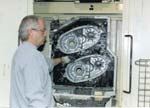

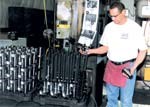
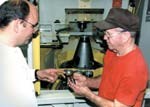
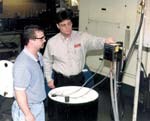
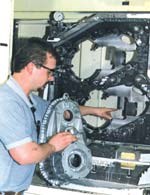








.png;maxWidth=300;quality=90)










